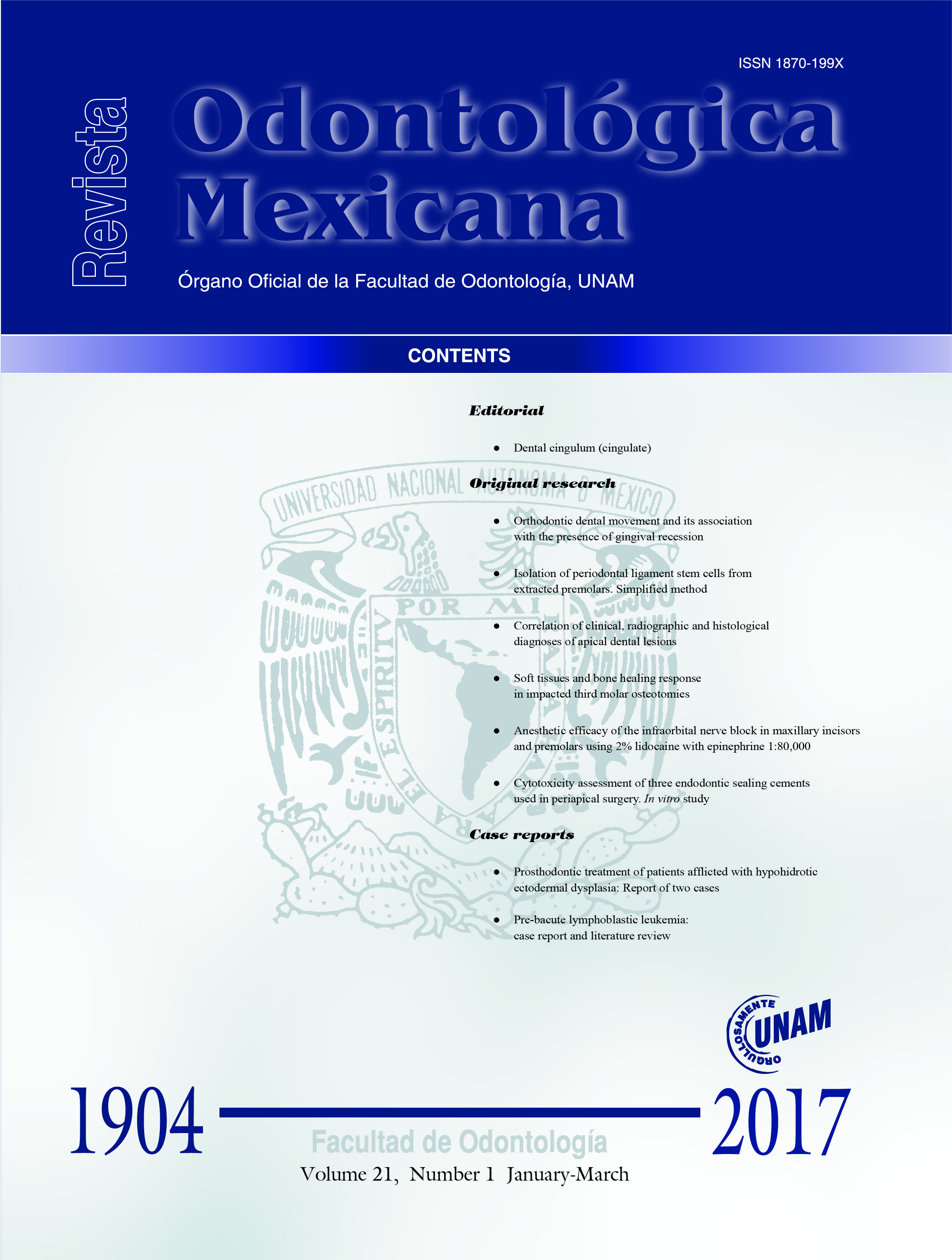Anesthetic efficacy of the infraorbital nerve block in maxillary incisors and premolars using 2% lidocaine with epinephrine 1:80,000
Contenido principal del artículo
Resumen
Objectives: The authors conducted a clinical-trial, uncontrolled study to determine infraorbital nerve block effectiveness. Material and methods: Nineteen adult volunteers received 1.8 mL of lidocaine 2% with epinephrine 1:80,000 with an intraoral, infraorbital nerve block. Researchers used an electric pulp tester to measure pulp anesthesia in maxillary incisors and premolars. Participants reported soft tissue anesthesia and discomfort during the injection procedure; anesthesia onset time and its duration were also assessed and analyzed. Authors analyzed data using STATA statistical program 9®. Results: Most of the subjects in our trial were 21 years old (30%); the number of female participants (n = 12 - 60%) was greater than that of male participants. Authors evaluated pain perception when injecting anesthesia with a visual analogue scale (VAS), fi nding that 57.9% of patients (n = 11) categorized the pain as moderate (in a scale of 3-6). When assessing anesthesia success, it was observed that a greater number of canine teeth and first premolars (57.9%, n = 9 - CI 95%) were anesthetized. The authors also observed a significant greater number of nonresponse (non-anesthetized) cases in central and lateral incisors (100-84.2%, respectively). Anesthesia onset was at 12 to 19 minutes, with canines exhibiting the largest number of anesthetized reports with 47.4%. There was a 100% incidence of subjective feeling of soft tissue anesthesia in lower eyelid skin, skin of the nose and skin of the upper lip. Authors noted that 100% of the subjects rated it as unpleasant (VAS). Conclusions: Infraorbital anesthesia technique achieved successful anesthesia in only 57.9% of upper canines and first premolars; it proved ineffective for anesthetizing central and lateral incisors. This was demonstrated after these teeth were evaluated using rigorous pulp vitality testing. Soft tissue anesthesia occurred and it was classified as uncomfortable. Authors consider that usefulness of infraorbital nerve block technique in dentistry was questionable.
Detalles del artículo

Revista Odontológica Mexicana por Universidad Nacional Autónoma de México se distribuye bajo una Licencia Creative Commons Atribución-NoComercial-SinDerivar 4.0 Internacional.
Basada en una obra en http://revistas.unam.mx/index.php/rom.
